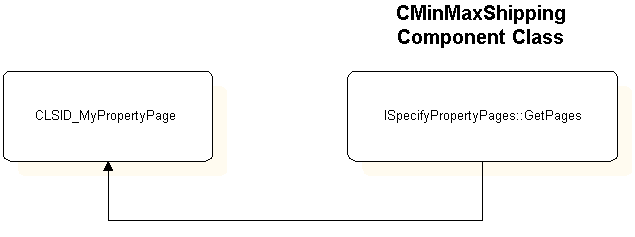
Property pages are implemented as separate Component Object Model (COM) objects, which allow property pages to be shared as required. Property pages for a pipeline component usually consists of three tabs. The first identifies general information about your component, the second identifies the OrderForm, Transport Dictionary and pipe context values that it uses, and the third provides component users with a user interface through which they can set the componentís properties.
When you implement a property page in a pipeline component, you create a class that implements the property page, and you implement ISpecifyPropertyPages in your main component class. The ISpecifyPropertyPages::GetPages method returns a pointer to the class in which your property page is implemented.

When you added an object to the MinMaxShip project, the Pipeline Component Wizard added a stub implementation of the ISpecifyPropertyPages interface to the MinMaxShipping.h and MinMaxShipping.cpp files. All you need to do to the stub implementation is to remove the comment marks around the code, and replace the class ID in the sample code with the class ID for the property page you add to the project.
To create a property page, use the ATL Object Wizard to add a property page to the MinMaxShip project. Visual C++ creates a new class for the property page, and adds the definition and implementation files for this class to your project.
To add property pages support to the MinMaxShip project, you must complete all the steps listed in Adding the Property Page, Implementing the Property Page and Implementing ISpecifyPropertyPages.